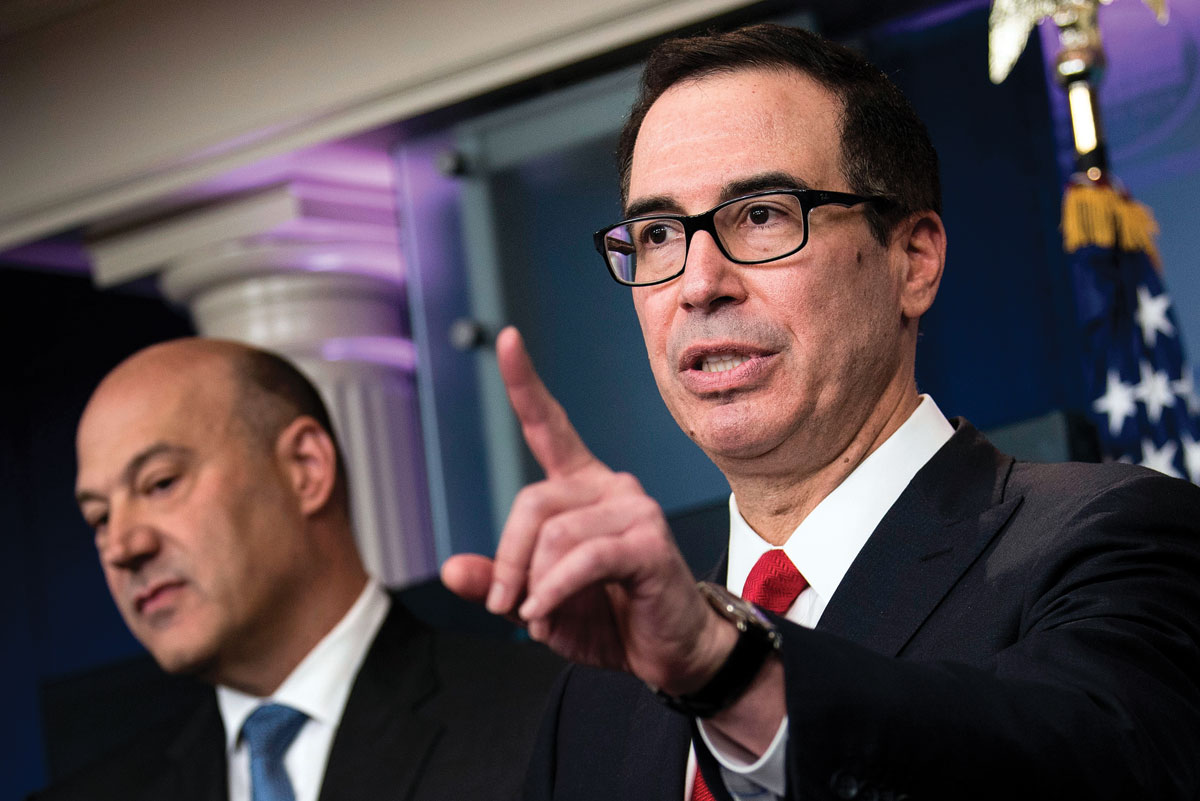The Trump Tax Plan, What It Means for You
National Economic Council Director Gary Cohn (l) and U.S. Secretary of the Treasury Steven Mnuchin take questions on tax cuts and reform during a briefing at the White House, April 26, in Washington, D.C. (Brendan Smialowski/AFP/Getty Images)
In late April, President Trump announced an outline of his tax plan. It was a short document, however, it contained a general framework of his vision. Ketu Desai presents a review of recent market activity, an overview of the proposed plan, and its impact on markets and various asset classes.
In recent weeks, the bond market and the equity market have been telling different stories.
The bond market has expressed caution as Treasury yields have come in, while equity markets continue to be in rally mode.
Among the key disputes between the two asset classes is the ability for the President to implement pro-growth policies, chief among them is the tax reform.
President Trump unveiled an outline of his tax plan in late April. One of the clear goals is to improve economic growth.
The Treasury Secretary has stated in numerous interviews that the goal is 3% or higher economic growth. This is would be a significant improvement, considering we have been stuck around 2% in recent years. While a 1% growth rate increase may not sound like much, however, when you consider the U.S. economy is approximately $19 trillion, a 1% increase is a significant amount of extra dollar growth that is created. The idea is to make business more competitive in the United States, which will foster investment and growth. At the same time, allow Americans to keep more of their earnings, to spend, which also fosters growth.
In summary, the tax plan cuts the corporate tax rate from 35% to 15%. It further cuts the top pass-through rate from 39.6% to 15%. Both of these are aimed at business, both large and small. The plan also lowers taxation on profits earned by companies overseas, and incentivizes them to bring profits back to the U.S. This is critical for large companies such as Apple, General Electric, and Microsoft that have billions abroad. These companies can bring this cash back and reinvest in the U.S. or simply return the capital to shareholders.
On the personal side, the idea is simplification. Trump’s proposal would reduce the current seven tax brackets to three with rates of 10 percent, 25 percent and 35 percent. He also plans to reduce the amount of itemized deductions and increase the standard deduction.
Let’s assume, all else equal, the tax reform has its desired impact in increased economic growth. What is the impact on various asset classes? The impact on equities would largely be positive. Higher economic growth generally means a better revenue opportunity. Further a lower tax rate generally means higher earnings per share. Earnings per share are an important driver for equity returns. The policy could have north of a 10% increase in S&P earnings per share.
For the bond market, it will depend on the type of security. For a Treasury bond, this could be negative. Theoretically, higher economic growth, would lead to higher inflation. Higher inflation, would mean higher interest rates. For bonds, price and yield (or interest rates) move inversely. Perhaps a simpler way to think about it is if there is inflation, each fixed payment a bond makes is worth less, because it has less purchasing power. However, for other types of bonds such as inflation-protected or floating rate bonds, this type of environment might not be so bad, and you will actually be able to make money on.
Gold could see an increase in demand due to higher inflation, as gold historically has been an inflation hedge. However, gold will ultimately move inversely with real interest rates. Real interest rates are the interest rate, after you factor in inflation. Thus, the movement in gold will depend on the magnitude of inflation we get from the policy, and the movement it creates in interest rates. That said, gold would certainly provide a level of protection in this environment.
What are the risks? The first is purely political, does the plan go through, and what version. If the plan does go through, it does risk over-heating our economy. We are in the eighth year of our economic recovery, the unemployment rate is low, such a policy might create more inflation than desired. Perhaps the risk that will be most discussed is the what it will do the Federal deficit. While many in the administration say that economic growth will pay for the plan, many outsiders remain skeptical. If the plan doesn’t pay for itself, it risks increasing the $559 billion deficit, and the $14.8 trillion of debt outstanding. Severe increases to either or both, hampers long term growth for the country.
We will find out the specifics over the coming months!
Interested readers can reach Ketu Desai by email ketu@isquaredwealth.com.


